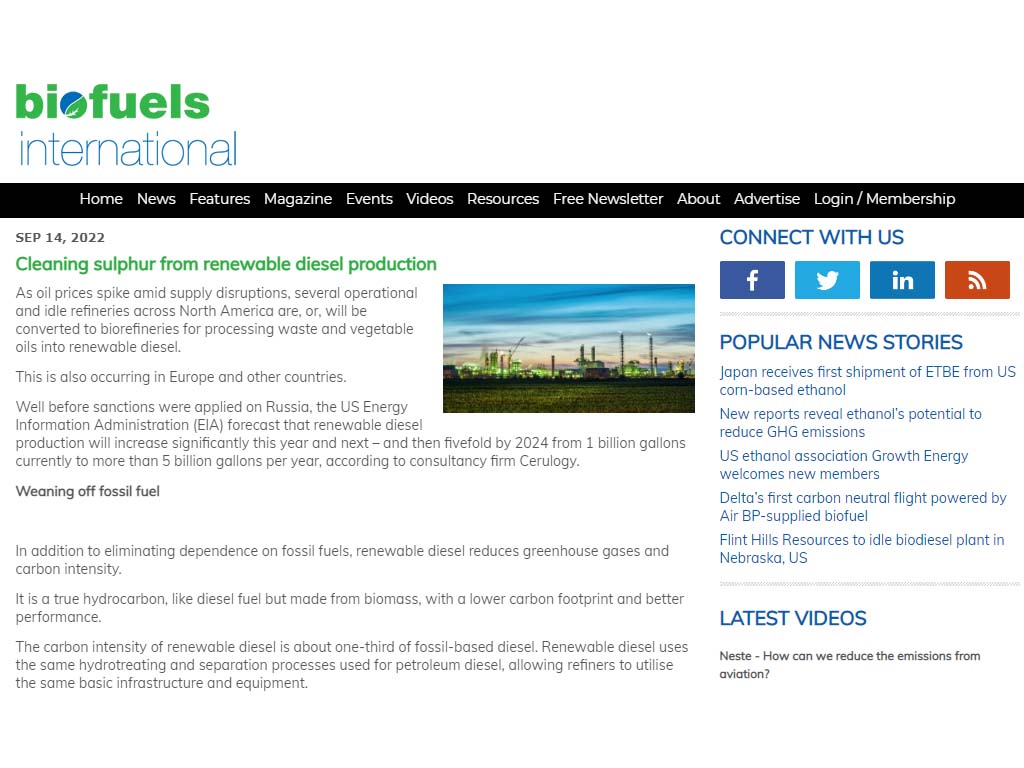Cleaning sulphur from renewable diesel production
September 14, 2022

As oil prices spike amid supply disruptions, several operational and idle refineries across North America are, or, will be converted to biorefineries for processing waste and vegetable oils into renewable diesel.
This is also occurring in Europe and other countries. Well before sanctions were applied on Russia, the US Energy Information Administration (EIA) forecast that renewable diesel production will increase significantly this year and next – and then fivefold by 2024 from 1 billion gallons currently to more than 5 billion gallons per year, according to consultancy firm Cerulogy.
Weaning off fossil fuel
In addition to eliminating dependence on fossil fuels, renewable diesel reduces greenhouse gases and carbon intensity.
It is a true hydrocarbon, like diesel fuel but made from biomass, with a lower carbon footprint and better performance.
The carbon intensity of renewable diesel is about one-third of fossil-based diesel. Renewable diesel uses the same hydrotreating and separation processes used for petroleum diesel, allowing refiners to utilise the same basic infrastructure and equipment. The first US commercial renewable diesel facility became operational in 2010 at the Geismar facility in southern Louisiana, a joint venture between Tyson Foods and Syntroleum Corp.
It is a true hydrocarbon, like diesel fuel but made from biomass, with a lower carbon footprint and better performance.
The carbon intensity of renewable diesel is about one-third of fossil-based diesel. Renewable diesel uses the same hydrotreating and separation processes used for petroleum diesel, allowing refiners to utilise the same basic infrastructure and equipment. The first US commercial renewable diesel facility became operational in 2010 at the Geismar facility in southern Louisiana, a joint venture between Tyson Foods and Syntroleum Corp.
It came online in 2010 with a capacity of 75 million gallons per year (MMgy) — later, ramping up to 90 MMgy.
It was purchased by REG in 2014. Additionally in 2014, Italian company Eni launched the world’s first refinery conversion.
Last year, a former refinery in Bakersfield, California, was converted into a biorefinery and is slated to be the largest renewable fuels facility in the western US as well as the largest in the country to produce renewable fuels from non-food based feedstocks.
Major and smaller oil companies have followed suit to reduce their carbon footprint.
It was purchased by REG in 2014. Additionally in 2014, Italian company Eni launched the world’s first refinery conversion.
Last year, a former refinery in Bakersfield, California, was converted into a biorefinery and is slated to be the largest renewable fuels facility in the western US as well as the largest in the country to produce renewable fuels from non-food based feedstocks.
Major and smaller oil companies have followed suit to reduce their carbon footprint.
Full Article Biofuels International
